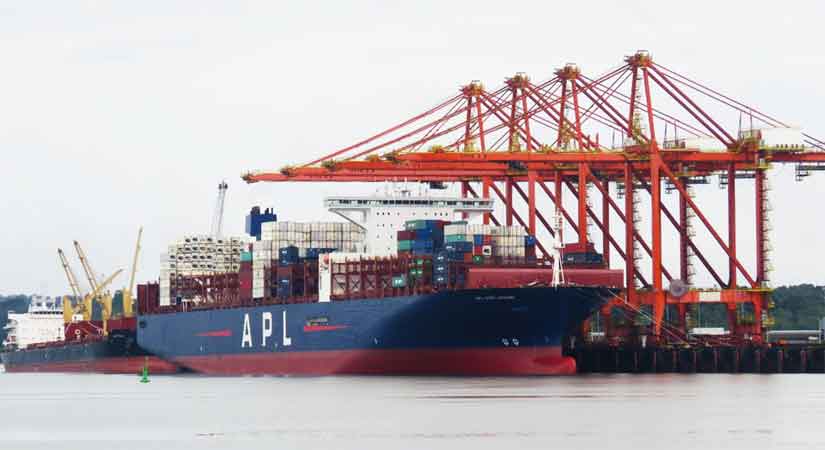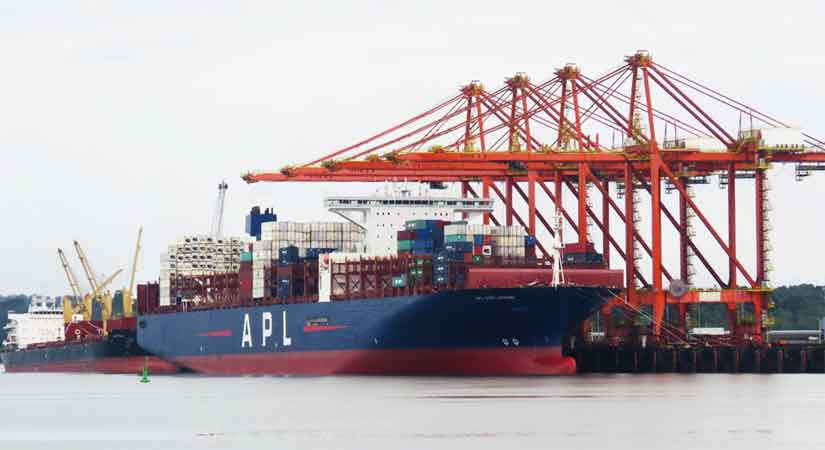
The country’s external trade deficit grew to its widest level in five months in August as the annual decline in imports once again outpaced that of exports, the Philippine Statistics Authority (PSA) reported on Friday.
Preliminary PSA data showed the trade-in-goods deficit at $2.076 billion in August, wider than the $1.860 billion in July but narrower than the $3.005-billion level in August 2019. The deficit in August 2020 was the biggest in five months or since March’s shortfall of $2.368 billion.
That month saw merchandise exports decline by 18.6% to $5.128 billion compared to a revised 9.1% slump in July and 1.4% increase recorded in August 2019. It marked the sixth straight month of decline for exports, as well as its fastest slide since the 26.9% plunge recorded in May.
Meanwhile, merchandise imports contracted for the 16th straight month in August by 22.6% to $7.204 billion. This was faster than the 5.2% fall in August 2019, albeit slightly slower than 23.8% in July 2020.
The country’s total external trade in goods — the sum of export and import goods — was $12.332 billion in August, 21% down year on year. This brought the total trade in the eight-month period to $93.190 billion, 23.2% lower than $121.335 billion a year ago.
For the eight months to August, exports fell 16.6% to $39.290 billion, just above the Development Budget Coordination Committee’s (DBCC) projection of a 16% contraction for the year.
Imports dropped by 27.4% to $53.900 billion, above the DBCC’s target of an 18% contraction for 2020.
Year to date, the country’s trade deficit stood at $14.610 billion, narrower than the $27.071-billion trade gap in 2019’s comparable eight months, but wider than the $12.534 shortfall in the previous month.
Exports of manufactured goods, which made up 83.4% of total sales in August, went down by 17.8% to $4.278 billion from $5.206 billion previously.
Electronic products, which accounted for 68.4% of manufactured goods and 57.1% of total goods sold overseas, slipped by 20.1% to $2.928 billion in August, with semiconductors chipping in $2.134 billion, down 21.3%
Exports of agro-based products shrank by 17.2% to $334.575 million. Forest products also fell by 27.3% to $28.990 million, as well as mineral products with -10.4% (to $388.501 million) and petroleum products with -99.4% (to $271,580).
On the import side, purchases of capital goods, which made up 32.4% of the import total, declined by 27.6% to $2.334 billion.
Raw materials and intermediate goods, comprising 40.9% of the total, fell by 8.9% to $2.946 billion.
Imports of consumer goods slid by 24.6% to $1.281 billion. Mineral fuels, lubricant and related materials also dropped by 47.7% to $563.391 million.
The trade figures in August remain unsurprising as the coronavirus pandemic dragged on, Philippine Exporters Confederation, Inc. (Philexport) President Sergio R. Ortiz-Luis, Jr. said over a phone interview.
“Nothing really affected the performance besides the pandemic. Even internationally [and locally], it is still [all about the] pandemic,” he said.
University of Asia and the Pacific (UA&P) Senior Economist Cid L. Terosa attributed the latest trade results to limited economic activity in other countries as well as having a “stronger peso” that contributed to the weakness in exports.
“[G]iven the weak economic performance of the country’s major trading partners, it was not surprising that exports continued to be weak. Meanwhile, merchandise imports improved slightly relative to the previous month because of the cautious advance of manufacturing production in the country,” Mr. Terosa said in an email.
Japan was the top market for Philippine goods in August, accounting for 17.3% with $887.38 million. It was followed by the United States with a 14.7% share or $751.68 million, and China’s 14.3% share or $732.57 million. Other key markets for exports include Hong Kong (14.1% share or $724.27 million) and Singapore (6.4%, or $330.67 million).
On the other hand, China was the biggest source of foreign goods purchased in August, accounting for 25.3% at $1.82 billion. Other major import trading partners were Japan (8.7% or $623.69 million), US (7.2% or $517.77 million), Singapore (6.9% or $495.11 million), and South Korea (6.8% or $493.11 million).
Meanwhile, the Philippine peso averaged P48.8433 versus the dollar in August, adding 62.42 centavos from its average of P49.4675 in July, central bank data showed.
In a statement, ING Bank N.V. Manila Senior Economist Nicholas Antonio T. Mapa said prospects for the country’s economic growth “continue to dim” with imports’ continued double-digit decline particular for consumer and capital goods in August.
“This development will likely translate to a similar impact on both household consumption and capital formation in the GDP (gross domestic accounts) accounts with ING expecting negative growth for both [the third and fourth quarter of 2020.],” Mr. Mapa said.
“In short, the sharp narrowing of the trade deficit will likely keep [the peso] supported for the balance of the year, but import trends point to worrying signs of poor growth prospects for the months to come,” he added.
For UA&P’s Mr. Terosa: “The same trend will persist for the rest of the year, but merchandise imports will most probably increase faster due to the revitalization of manufacturing production as the economy goes through more relaxed quarantine conditions and stronger seasonal demand for merchandise imports in the last quarter of the year.”
Philexport’s Mr. Ortiz-Luis remains hopeful exports and imports will at least flatten towards the end of the year, with a rebound in external trade in 2021. – Ana Olivia A. Tirona
